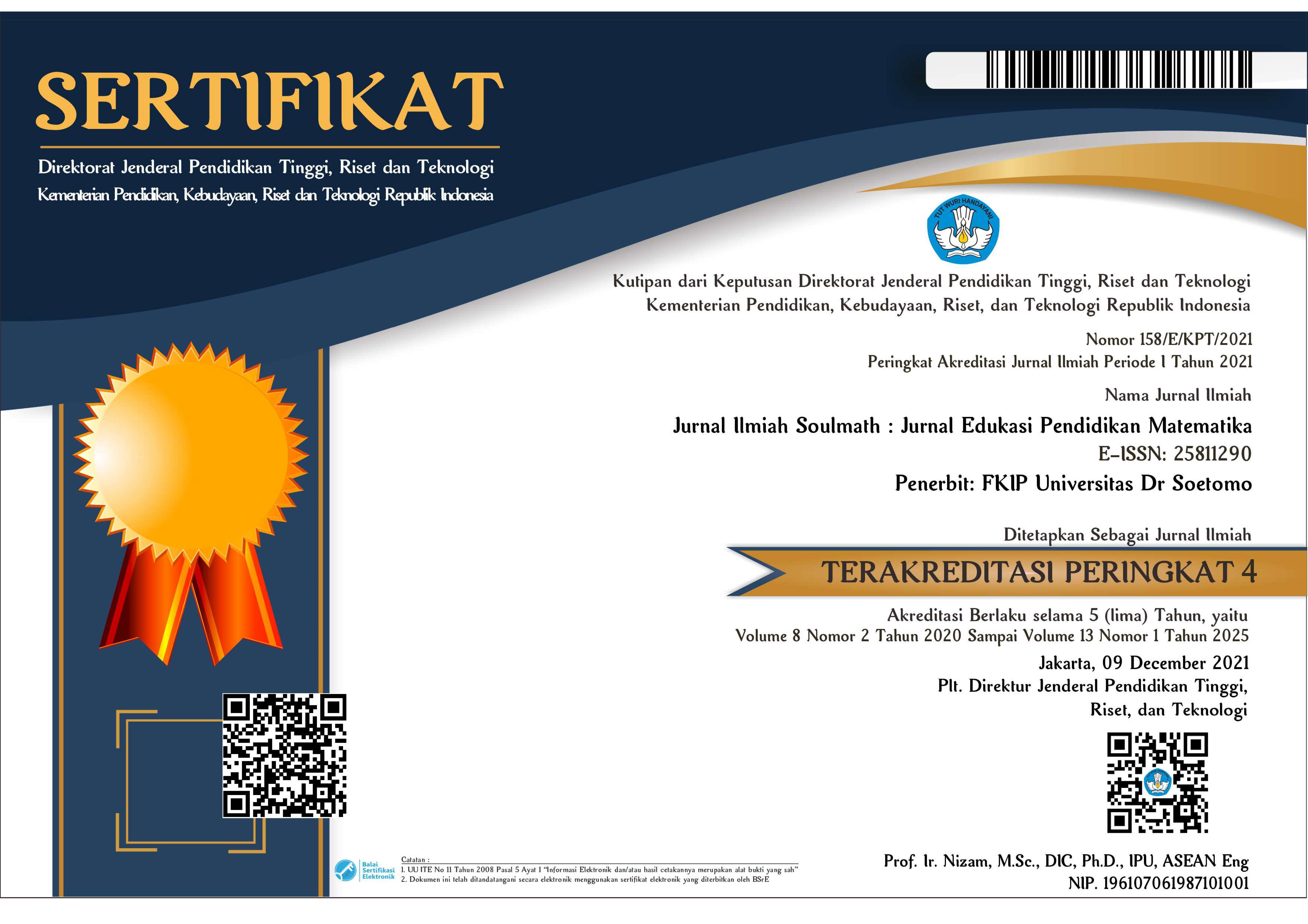Profil Lapisan Pemahaman Konsep Siswa SMP Terkait Garis Tinggi Segitiga
 Abstract views: 649
,
Abstract views: 649
,
 PDF (Bahasa Indonesia) downloads: 767
PDF (Bahasa Indonesia) downloads: 767
Abstract
This qualitative descriptive research intends to explain the profile of the layer understanding concept of junior high school students related to the altitude of the triangle. The layer understanding concept consist of eight layers, i.e. Primitive Knowing (Pk), Image Making (Im), Image Having (Ih), Property Noticing (Pn), Formalizing (Fo), Observing (Ob), Strucuring (St), and inventising (In). The subject of this research had taken by purposive sampling technique and had obtained three first grade of junior high school students of Negeri 3 Salatiga. Based on the result of the research obtained i.e. 1) in term resolving the matter of concept understanding the altitude of a triangle concept, a high-ability subject reached In layer, a middle-ability subject reached St layer, a low-ability subject reached Fo layer; 2) in term resolving the matter of concept drawing altitude of acute triangle a high-ability subject reached In layer, a middle-ability subject reached St layer, a low-ability subject reached Ih layer; 3) in term resolving the matter of concept drawing altitude of obtuse triangle a high-ability subject reached St layer, a middle-ability subject reached Fo layer, a low-ability subject reached Ih layer.
Downloads
References
[2] “Permendikbud 2016 nomor 24 lampiran 15.”
[3] A. P. Puspitasari dan E. Prihatnani, “DESKRIPSI PEMAHAMAN KONSEP KEJADIAN MAJEMUK SISWA KELAS XI IPA SMA NEGERI 3 SALATIGA,” JMP Online, vol. 2, no. 1, hlm. 17, 2018.
[4] S. Pirie dan T. Kieren, “Growth in mathematical understanding: How can we characterize it and how can we represent it? Educational Studies in Mathematics,” vol. 26, hlm. 165–190, 1994.
[5] L. J. Moleong, Metodologi Penelitian Kualitatif. Bandung: PT Remaja Rosdakarya, 2011.







